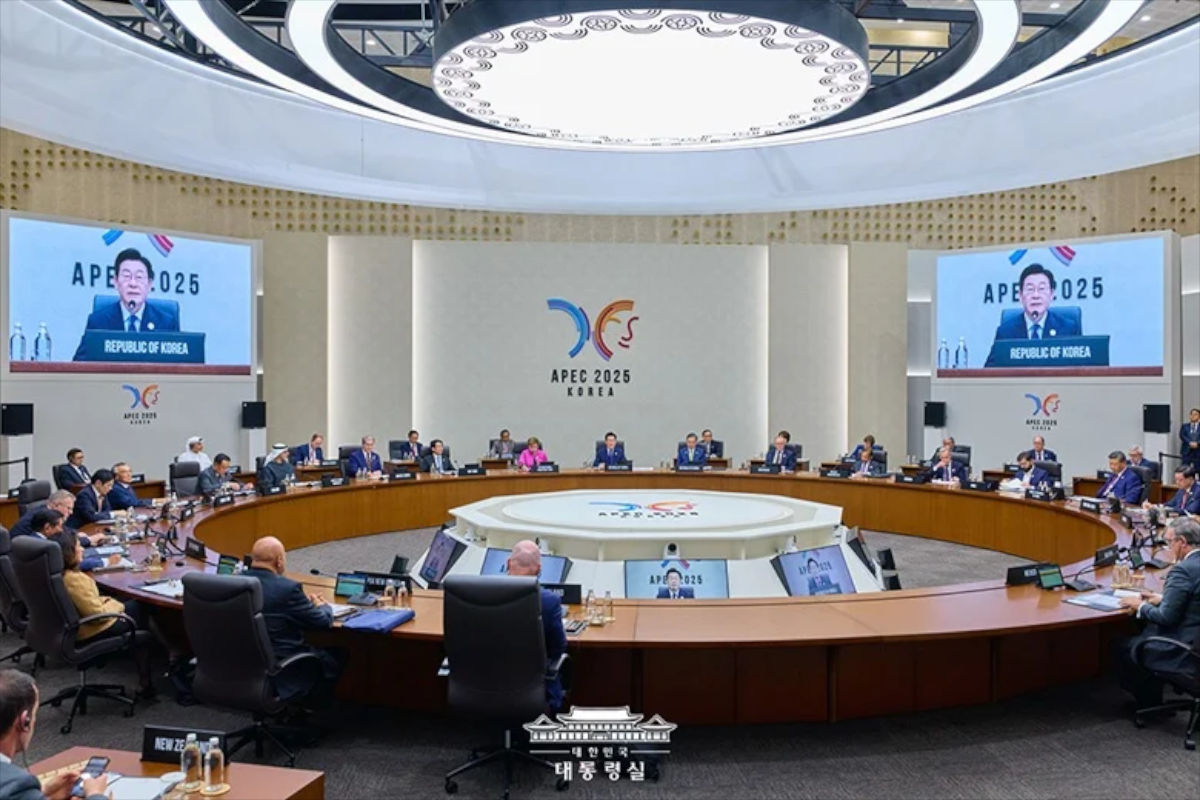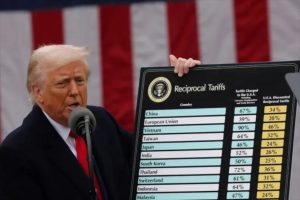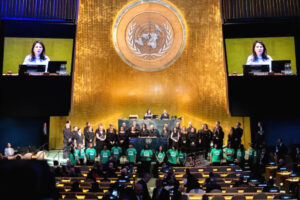The Moment When Symbols Turn Into Mechanisms
On the ancient frescoes of Gyeongju, caravans once stretched through the eastern passes — today they move along fiber-optic routes and satellite orbits. Where silk and porcelain once traveled, terabytes now flow. The APEC 2025 summit returned Gyeongju to its ancient function as a crossroads — only now it brings together not merchants but the engineers of a global system. For the first time in the forum’s history, the final document omitted any mention of the WTO. And this is not an editorial detail. It marks the moment when the world stopped revolving around Western architecture. In the hall, the discussion was not about principles or “values,” but about concrete protocols — how to replace ideology with engineering.
Gyeongju became the point where the lexicon of power shifted. Asia stopped defining itself through the market and competition. It began to think of itself as a system. What matters here is not “openness” but coherence — not promises, but codes of interaction. The transition from the rhetoric of trade to the language of infrastructure is recorded directly in the text of the declaration. Asia no longer seeks the center of globalization — it builds its own orbits.
Numbers and Texts
The Gyeongju Declaration identified three pillars of a new era: resilient supply chains, digital infrastructure, and AI governance. Everything is concrete — investments, joint standards, data exchange. On the surface — technical language. Inside — the political geometry of a new world. The official text of the declaration itself fixes these shifts, replacing the vocabulary of liberalization with that of coordination and shared protocols.
The absence of the WTO and the OECD is no coincidence. The mechanism that long served as the showcase of globalization has shifted under regional management. The declaration no longer sings hymns to liberalization. Its rhythm is connectivity and autonomy. Asia has stopped asking for permission to speak its own language. It has fixed this in official documents. Integration no longer means submission to the rules of the metropole. It means configuring compatible systems where each player retains sovereignty over its own data, resources, and technologies. The West remains outside the brackets — not because it was excluded, but because it is no longer at the center of the text.
From Rhetoric to the Engineering of Sovereignty
Beijing proposed a new institution to the world — the World Organization for AI Cooperation — and simultaneously extended the “Digital Maritime Silk Road.” Thus, the digital topography of Southeast Asia takes shape: data lines, ports, gateways, data centers. According to official Chinese statements, these initiatives were directly promoted by President Xi during the APEC sessions, confirming China’s role as the primary initiator of applied multilateral platforms .
For China, this is a reconfiguration of space. Asia is no longer plugged into external sockets. It is building its own sources of power. Sovereignty ceases to be a slogan — it becomes a system parameter. It is measured in megawatts, gigabytes, billions of transactions. The new order is formed from invisible architectures — and in this engineering, the old accent of the dollar can no longer be heard.
“Operational Equilibrium” and the Factor of Systemic Integration
The Russian delegation in Gyeongju acted as an architect of new connections. Behind closed sessions, discussions centered on integrating Russia’s Mir payment system with China’s CIPS and developing unified settlement protocols for the Eurasian sphere. Official data from the Bank of Russia and recent inter-system integration reports confirm this direction — the use of payment connectivity as a concrete mechanism of geopolitical alignment.
For Moscow, the forum went beyond a stage for diplomatic courtesies and became an engineering testing ground. From economic instruments, a new system of trust is being assembled — without slogans of brotherhood and without demands of loyalty. Functional compatibility replaces ideological sympathies. Russia is reclaiming agency through participation in concrete operations, where it is not rhetoric that decides, but the functionality of code and logistics. This logic of technical interdependence already extends northward, where Russian and Chinese transport corridors converge into a single operational geography — a reconfiguration of space that turns trade routes into instruments of sovereignty . The eastern vector has ceased to be merely a direction of foreign policy. It has become the structural frame of the continent, where routes connect Vladivostok, Busan, Changchun, and Haiphong — cities where a new equilibrium is emerging, independent of Western clearing centers.
From Declarations to Design
APEC 2025 became the point where the post-global order took the shape of a network. The decisions signed in Gyeongju transformed geopolitics into an engineering discipline. Across the region, similar processes have already materialized through the upgraded China–ASEAN Free Trade Agreement — an institutional anchor that translates political autonomy into structured economic mechanisms . Political autonomy is now expressed through cables, terminals, and power lines. Infrastructure becomes the body of the new world.
The main outcome of the forum is simple and irreversible. Asia has learned to manage change without revolutionary manifestos. Control over systems of communication, transport, energy, and data has become the core of agency. Every contract in the region is a step toward a self-sufficient architecture, where the former centers of influence lose gravity. Gyeongju recorded this transition. Asia no longer asserts its independence in words — it has embedded it in algorithms.





